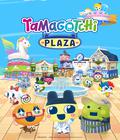Ar Tonelico Qoga: Knell of Ar Ciel isn't what I'd call a great PlayStation 3 role-playing game, but I'm going to present an argument as to why it's better than it should be. It doesn't have the big budget that Final Fantasy XIII has, so it doesn't push the envelope with graphics and cut scenes. Ar Tonelico Qoga resembles a late-stage PS2 title or an early PS3 game. It also doesn't have the unique combat system of From Software's Demons Souls; instead, Ar Tonelico borrows heavily from the Tales series for which Namco is well-known.
Ar Tonelico Qoga isn't a particularly great RPG that breaks the mold, so why did I end up enjoying it so much? I've got one word for you: carrots. On a stick. In front of my face.
That might seem like a dumb reason to enjoy a game, but Ar Tonelico Qoga gives you so much to do over 25-30 hours. There's even more playtime if you want to see everything, unlock all nine endings, and craft every single item. This game really excels at giving you a central story goal to pursue, but it distracts you at every turn. There are actually very few side-quests, so you won't be running around and collecting an item for the local hermit in the big city. Instead, all of the distractions are focused on building up your existing relationships with your teammates. This is done by locating small glowing icons that reveal extra dialogue scenes, and additional talking points occur during save points. There's also a huge system in place that deals with exploring the psyche of the Reyvateil companions, but I'll delve into that later.
That's really what Ar Tonelico Qoga is all about. You've got your basic RPG story tropes. Aoto, the main hero, is a basic take on a lot of anime-inspired protagonists: He's cocky, says the wrong things to ladies at the wrong time, and he thinks he's the best at what he does. He'll reveal a more tender side from time to time, and that'll come to light a little more after you interact with the Reyvateils on your team. The plot introducing him as your main character, though, is taken from pretty much every Japanese RPG ever made. Aoto is a character in a small town, and he's drawn into a much larger conflict when he rescues a girl named Saki. The plot is a little plain and goes off the rails toward the end when the game starts to throw around some weird tech stuff involving sentient virus programs and so on.
Instead, the game excels at constantly throwing new character information at you about your existing team. A lot of it isn't particularly well-written, but it's tough to tell whether that's a result of translation issues or the core script. I found so much of the game to be enjoyable, though, that I was willing to overlook the bad jokes that fell flat or the wild character moments that seemed to be out of place. As things fall into place toward the end of the game, you start to feel pretty involved with the relationship you've pursued. The endings are well done, feel pretty sincere and have a positive outlook; I preferred this to some of the darker fare that we see in modern video games.
Building relationships is a huge component of the story and gameplay in Ar Tonelico Qoga. Pretty much everything in the game revolves around the relationships that you create with the Reyvateils, but I'll start with the combat system. Combat is a little like the Tales series, and it's different from the combat in previous Ar Tonelico titles on the PS2. You have direct control over one of three combatants, but you can switch between them at any time, and the other two are always controlled by the AI. A fourth character, your Reyvateil, also participates on the field. The Reyvateil controls the flow of the battle by constantly singing a song that displays a visualizer at the bottom of the screen. If you time your attacks according to the high points of the song as indicated by the visualizer, you'll start to build up a meter that allows you to "purge" your Reyvateil by making her strip.
Yes, the battle system requires stripping.
After your Reyvateil strips, she grants stat bonuses to your fighters, such as Attack Up, Defense Up, Magic Up and so on. These commands are pretty basic, but you can unlock different levels over time, and they become pretty important to beating some of the tougher enemies. If you manage to purge your Reyvateil far enough, you can unleash a powerful move that can wipe out all enemies in a basic encounter — and even a few boss fights. However, to be able to purge your Reyvateil, you need to build your relationship with her outside of combat.
Building a relationship is done by traveling through the Cosmosphere, which is essentially a Matrix-style jump into the Reyvateil's subconscious. You can access this by going to Dive Stations located in most of the towns you'll visit. You need to have enough CP points, which are gained by participating in battles, to make your way through a Reyvateil's Cosmosphere. There are multiple levels to explore, and you'll need to revisit them to get farther. They are also locked by the story at certain points, so you can't blow through the entire Cosmosphere in one sitting. The Cosmosphere sections are all text-driven and usually involve finding a Reyvateil's deep secret. By finishing a Cosmosphere level, you unlock a purge level for your Reyvateil so that she can strip down more in battle.
Occasionally, the Cosmosphere provides little fairy-like creatures called Hyumas, which are like equipment for your Reyvateil and come in a variety of levels. They basically grant the Reyvateil the ability to cast stat increases during combat. Reyvateils can only equip things according to the level of their relationship with you, so if you increase your relationship with your Reyvateils by interacting with them more during Cosmosphere events or during events at save points, then you can equip better Hyumas for combat. It's a pretty involved mechanic, and it's definitely Ar Tonelico Qoga's most unique feature.
That's one aspect of the carrot on a stick that kept me interested in Ar Tonelico Qoga. Diving into the Cosmosphere of each Reyvateil takes a lot of time, but there are some great rewards involved, and I enjoyed collecting as many Hyuma as possible. There are a lot to collect for each Reyvateil, and although I didn't use half of them, I kept searching for them because I knew that there were more to collect.
Another addictive feature is the somewhat random talking points. You can find some talking points, which are designated by red glowing spots. Other talking points require backtracking to discover and will only show up after specific story events, so finding them all can feel a little random. The game keeps track of these events with grids for each character.
Then there are the Reyvateil-specific conversations, which occur at save points throughout the game. These are usually generated after specific story events, but other things, such as crafting items or performing new unlocked super moves, can also trigger these events. These are also kept track of on a separate grid, so there's even more stuff to collect and fill in. These talking events are also vital to unlocking more levels of the Cosmosphere, so they're more important from a gameplay perspective.
Finally, there's the crafting system. I loved the crafting system in another Gust-developed RPG series, Mana Khemia, and I'm a little let down by Ar Tonelico's offering. You collect recipes in treasure chests that are scattered around dungeons. This certainly spurs along my urge to collect stuff, and I hate knowing that I missed something. There's some great stuff that you can craft here. Not only will you create basic items, such as healing potions, but you'll also unlock better weapons and special moves for your characters. When you craft items, you can pick the Reyvateil you use, and then you're treated to a little dialogue scene for each new item you craft. This builds upon the importance of relationships, and I really liked that touch.
To sum things up, Ar Tonelico Qoga: Knell of Ar Ciel doesn't look so hot on the surface. The combat is a little contrived, the visuals are sub-par when compared to some of the higher budget RPG fare on the same console, and the somewhat racy elements are not going to be for everyone. If you're willing to take the time to dive into the game — pun intended — you'll discover some really unique and well-drawn characters to enjoy. This is one of the better casts I've encountered in a modern RPG, and I think many fans will do well to check out this title. It's not going to be everyone's cup of tea, but there's a lot more content than you'd expect from a cursory glance. Depending on how you feel about collecting and uncovering lots of items in your video games, Ar Tonelico Qoga can keep you entertained for many, many hours.
Score: 8.0/10
More articles about Ar tonelico Qoga: Knell of Ar Ciel











 Ar tonelico Qoga is the final installment in the Ar tonelico series. In Sol Cluster, a kingdom is ruled by Clustania, an organization with an ultimate goal of enslaving humans and ruling the world. Two key Reyvateils (humanoids) fight back against the injustice.
Ar tonelico Qoga is the final installment in the Ar tonelico series. In Sol Cluster, a kingdom is ruled by Clustania, an organization with an ultimate goal of enslaving humans and ruling the world. Two key Reyvateils (humanoids) fight back against the injustice.




























